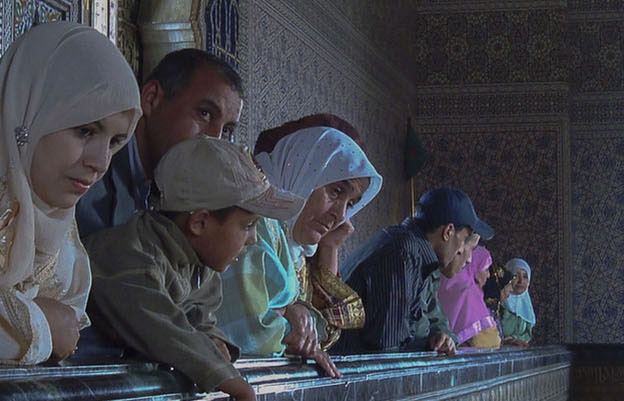'Relations with Morocco go much further back than the first migrant workers'
On June 4th an article on the relations between Morocco and the Netherlands appeared on the news page of University Leiden.This article appeared previously in Leiden University's free alumni magazine Leidraad.
The Netherlands and Morocco: relations between the two countries go back a long way. Assistant professor Nadia Bouras is researching these relations. Of Moroccan migrant workers, she says, 'In the seventies the predominant idea was that everyone had the right to their own culture and religion. That's almost unthinkable today.'
Centuries-old relations
‘In my lectures on migration I try to promote study trips from Leiden University to NIMAR (see box) in Rabat. I talk about how fantastic it is that Rabat is so close, and yet at the same time so far away. There are all kinds of misconceptions about Morocco and Moroccan immigrants, so it's often an eye-opener for my students to learn that relations between the Netherlands and Morocco go back much further than the arrival of the first migrant workers in the last century. Our two countries have had close contacts for around four hundred years. It's a situation that lends itself well to excursions to current affairs and politics during my lectures, although the historical facts are the main basis.'
Rabat
‘I also try to get my students interested in our programmes in Rabat. I believe it's both great and logical that NIMAR is affiliated to Leiden University; after all, Leiden is the centre of Arabic studies in the Netherlands. The institute has a societal function, but is primarily a scientific institution. This autumn we will be running a minor in Culture and Society for students from all kinds of backgrounds, and next spring there will be a language programme intended primarily for students of Arabic.'
Integration school
‘I recently started some research on the first integration school in the Netherlands. This school, specially for the children of migrant workers, was set up in Amsterdam in 1971, not by the workers themselves, but by a Dutch minister and his wife. Children were taught in French and Arabic and also learned about their own culture. The idea was that the children of migrant workers should know their own language and culture ready for when they returned to their own country, but the overriding idea was that everyone had the right to their own culture and religion. That's unimaginable today. I'm going to look for the people who left this school in 1994 and went on to further education. I want to find out what became of them.'
Multicultural city
‘Research also features strongly in a completely new programme due to start in September: Urban Studies. This is a multidisciplinary programme that falls under Humanities. There are four key themes, one of which is the multicultural city. That's the theme I'm involved in. We will be looking at current issues like integration and migration, all taking the city as the point of departure. We'll be addressing such questions as what multiculturalism does with the city. We'll be using the city as our lab. Take the city of Amsterdam, for instance, where there are 200 different nationalities co-existing together without any single group being strongly in the majority. That poses some really interesting questions, like: Who do newcomers have to adapt to? What happens when a neighbourhood bcomes very hip? Whose city is it? And what do municipal officials do with multiculturalism? As early as in the second year, students start conducting research at different institutions, to help them with these kinds of issues.'
Red carpet for expats
‘An interesting case is the research conducted by my colleague Aniek Smit, who obtained her PhD earlier this year on the way expats are received in the Netherlands. They're treated like VIPs. In The Hague there's even a special desk for expats. I do understand that: expats emanate success, wealth, international allure. They are highly desirable migrants. I'm curious about what the effect would be on our society if that Syrian family was given the red carpet treatment. And another interesting question is, can we make a comparison between the way migrant workers were received at that time, in the early years, and expats today? There are a lot of similarities in the circumstances. Both groups were given a warm welcome, they were expected to be only temporary residents, they were addressed in their own language, based on their own culture. I am curious about the differences and similarities in their integration. We will be looking at this issue in Urban Studies, both in the Netherlands and across the border; in Rabat, for example.'
Text: Nienke Ledegang
Images: Marius Roos
Mail the editors


